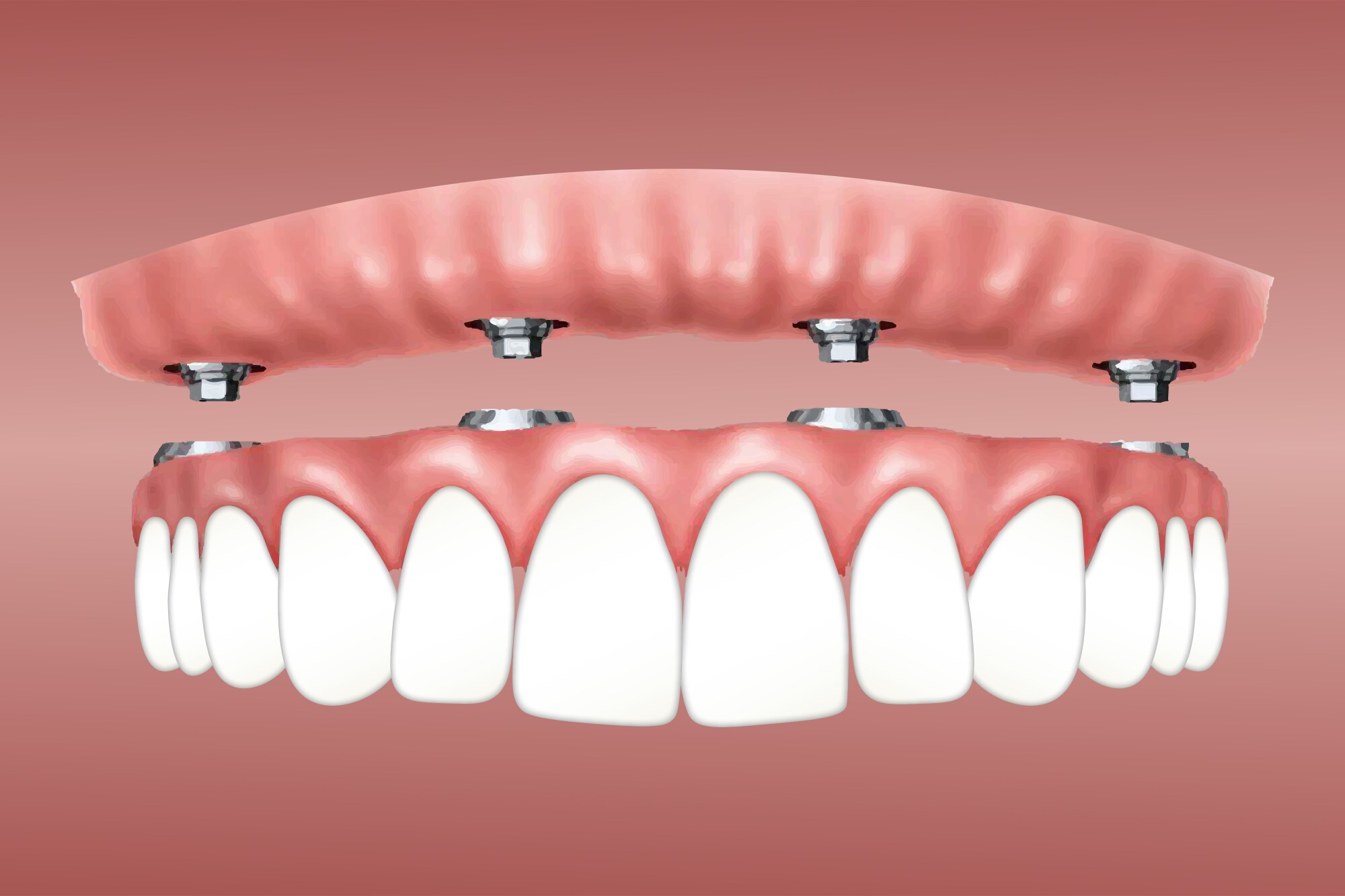Not known Incorrect Statements About Dental Sense
Table of ContentsIndicators on Dental Sense You Should KnowAn Unbiased View of Dental Sense9 Easy Facts About Dental Sense ShownGetting The Dental Sense To Work
are clinical tools surgically dental implanted into the jaw to bring back an individual's capacity to chew or their appearance. They supply assistance for fabricated (phony) teeth, such as crowns, bridges, or dentures. When a tooth is shed due to injury or illness, a person can experience complications such as fast bone loss, faulty speech, or modifications to chewing patterns that cause discomfort.Dental dental implant systems are composed of a dental implant body and oral implant abutment and might also consist of an abutment addiction screw. Dental implant vs bridge. The oral implant body is operatively placed in the jawbone instead of the tooth's origin. The dental implant abutment is typically connected to the dental implant body by the joint addiction screw and extends through gums right into the mouth to support the connected synthetic teeth
(https://anotepad.com/note/read/pydwx7ht)Framework of The Oral Implant System choosing dental implants, talk with your dental copyright concerning the prospective benefits and risks, and whether you are a prospect for the treatment. Things to consider: Your overall health is an important consider figuring out whether you are a good prospect for oral implants, how much time it will require to heal, and for how long the implant may remain in area.
Smoking may influence the recovery procedure and lower the long-lasting success of the dental implant. The recovery procedure for the dental implant body might take several months or longer, throughout which time you commonly have a temporary abutment instead of the tooth. the dental implant procedure: Meticulously follow the dental hygiene instructions offered to you by your oral supplier.
The 2-Minute Rule for Dental Sense
Implant failing can cause the demand for one more surgery to take care of or change the implant system. Restores the capacity to eat Brings back aesthetic appearance Aids maintain the jawbone from diminishing because of bone loss Maintains the wellness of the bordering bone and gum tissues Aids maintain adjacent (neighboring) teeth secure Boosts lifestyle Damage to surrounding all-natural teeth during implant positioning Injury to the surrounding tissues throughout surgical treatment, such as sinus opening Injury throughout surgery (as an example, crack of surrounding jawbone) Poor function, such as seeming like the teeth do not attack together typically A sensation that the tooth is loosened or turning in area resulting from a joint screw loosening Implant body failing (looseness of the dental implant body) due to systemic infection, which might be most likely in individuals with uncontrolled diabetes due to neighborhood infection in bone and gum tissues supporting the dental implant body because of delayed recovery, which may be extra most likely in patients who smoke Trouble cleansing the gums around the implant, causing inadequate dental health Untreated periodontal disease Post-surgical numbness because of nerve impingement or damage Constantly alert healthcare suppliers and imaging service technicians that you have oral implants before any type of magnetic resonance imaging (MRI) or x-ray procedures.
FDA is not aware of any adverse events reported for MRI or x-ray treatments with dental implants. Dental implants systems are usually constructed from products that follow global agreement standards of the International Organization for Standardization (ISO) or ASTM International. These standards have details of what makes a safe product.

A dental implant is a framework that changes a missing tooth. With screw-like gadgets, the specialist inserts an implant into the jawbone, and it acts as a support for a man-made tooth, called a crown.
Dental Sense for Beginners
Some people are not eligible for oral implant surgery. It is for dental cosmetic surgeons to operate on people with: intense illnessuncontrollable metabolic diseasebone or soft tissue condition or infectionIf these issues are resolved, an individual can have the surgical treatment. In, dental doctors avoid from operating on individuals with: If individuals with any one of the above undergo dental implant surgery, there is a higher threat of the dental implant stopping working.

Dental implant surgery is a customized process. Provide you time to heal. Connect the message and last crown, bridge or denture.
Next, your specialist will very carefully place the oral from this source implant right into your jaw. Finally, your cosmetic surgeon will rearrange your gum tissues and shut the laceration with stitches. If your implant is near the front of your mouth, your dental professional will make a short-lived tooth for you to wear till you heal. By doing this, you won't have a space in your smile while you recoup.
Dental Sense Can Be Fun For Anyone
Your supplier can inform you what to expect in your situation. Throughout the recovery phase, your jawbone needs to fuse to the dental implant. This process, called osseointegration, is essential for security and lasting success. This procedure can take anywhere from 3 to nine months. In some situations, it might take longer.
Once your dental implant heals, your dental practitioner can connect the abutment (small port blog post) and your final remediation (crown, bridge or denture). This typically takes concerning one hour to finish and might call for a second minor surgical procedure. You should not feel any discomfort during your dental implant procedure due to the fact that your company will make use of medication to numb your periodontals.